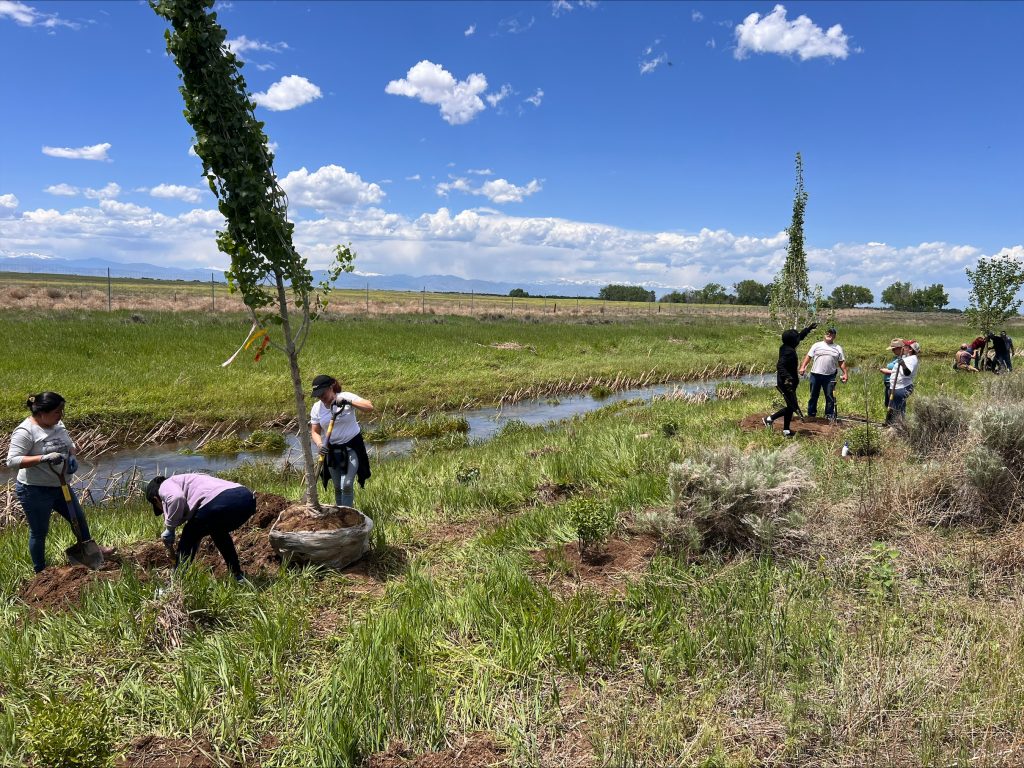Restoring Riparian Areas, Reviving Grasslands: How the NWTF’s Work Along Waterways Is Helping Imperiled Prairie Ecosystems
The Great Plains — a once-vast sea of grass that stretched across more than 2 million square kilometers — has been cut by more than half. What remains of this iconic North American grassland ecosystem is under immense pressure. This loss has not only compromised habitat for native wildlife, plants and pollinators, but it has also disrupted the balance of the entire ecosystem.
Today, the grasslands that once defined the heart of the continent are imperiled — and one of the key battles for their survival is taking place in an unlikely place: along the banks of rivers and streams.
At first glance, riparian areas — the green corridors of trees and shrubs that line waterways — may seem worlds apart from the windswept prairies surrounding them. But these two ecosystems are fundamentally connected. The National Wild Turkey Federation’s Waterways for Wildlife Initiative recognizes this vital relationship and is working across the Great Plains to restore riparian areas that also benefit surrounding grasslands.
“Through our Waterways for Wildlife Initiative, we’re working to conserve these ribbons of life to protect more than just wild turkeys,” said Annie Farrell, NWTF district biologist for Texas, Oklahoma, Kansas and Nebraska. “By improving riparian habitat, we’re not only improving stream health but also safeguarding the integrity of the surrounding grasslands. Every invasive tree we remove, every native plant we reestablish and every Zeedyk structure we install helps slow the loss of prairie habitat and enhances wild turkey habitat in the process.”

With less than 1.5% of the Great Plains landscape classified as riparian, it may be surprising to learn that over 70% of plains wildlife species rely on these ribbons of life. From migratory birds and native fish to pollinators and wild turkeys, countless species depend on the shelter, water, food and connectivity that riparian areas provide. Current projects under the Waterways for Wildlife Initiative across the Great Plains highlight this dual impact.
The two primary causes of grassland loss in the Great Plains are woody plant encroachment and land development.
Cultivation of native prairie for row crops and urbanization are well-known factors, but woody encroachment — the gradual spread of trees and shrubs into open grassland — is a slower, insidious threat. Riparian areas, with their wetter soils and fire-resistant terrain, often serve as a foothold for this encroachment. Over time, unchecked woody expansion radiates outward from these corridors, transforming once-open prairie into brush-dominated habitat that is no longer suitable for grassland-dependent species.
Without intervention, this dynamic sets off a chain reaction that undermines ecosystem function, reduces biodiversity and erodes critical habitat. But when riparian areas are restored by strategically removing woody invasives, creating in-stream structures where necessary and adding grazing infrastructure to ranching operations, water quality and availability is enhanced, and native vegetation establishment is facilitated. So, the NWTF’s Waterways for Wildlife Initiative is not only improving the health of streambanks across the Great Plains, but it is also halting the expansion of woody species into surrounding prairies. In short, riparian restoration is grassland restoration.
“We restore these riparian areas through best management practices like removing invasive species, reestablishing native vegetation, streambank restoration and installing beaver mimicry structures, among many others,” said Clayton Lenk, NWTF district biologist for Minnesota, North Dakota, South Dakota and Wisconsin. “This not only improves the health and strength of the streambank but also enhances water quality and availability — a growing concern in the west.”
Grasslands and riparian areas may be distinct in form, but they are inseparably linked in function. Healthy riparian areas benefit and enhance prairie ecosystems. Healthy grasslands buffer streams from sedimentation, nutrient loading, support natural fire cycles and enhance the resilience of riparian habitats. Together, they support wildlife, store carbon, filter water, sustain agriculture and provide the natural infrastructure that local economies, outdoor recreation and rural communities rely upon.
At NWTF, this work along the waterways is not just about conserving the narrow green veins that wind through the Great Plains — it’s about reviving the wider landscape they nourish. In doing so, the NWTF’s gives the wild turkey — along with a vast number of other fish and wildlife species, pollinators and future generations — the chance to thrive in a landscape that is whole again.
The NWTF’s Waterways for Wildlife Initiative just announced its fourth year of funding critical riparian conservation projects. Learn more about these new projects and how the NWTF initiative is addressing water conservation on a landscape scale.
